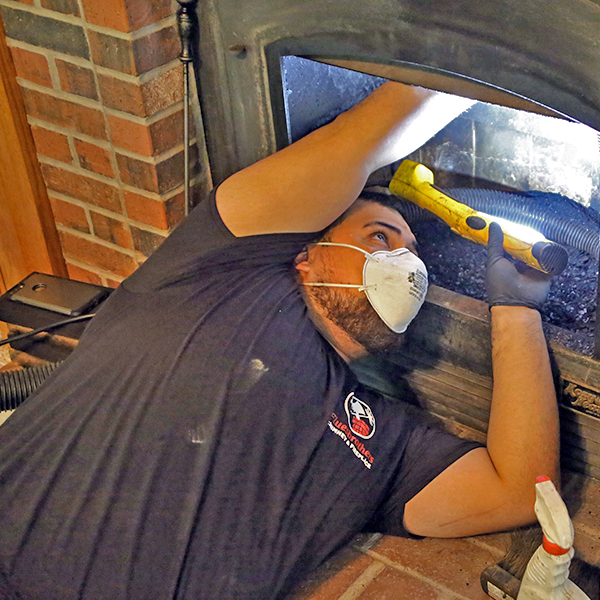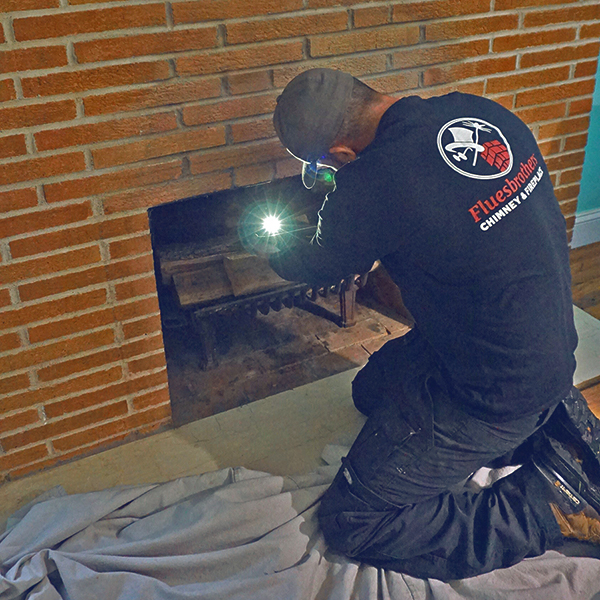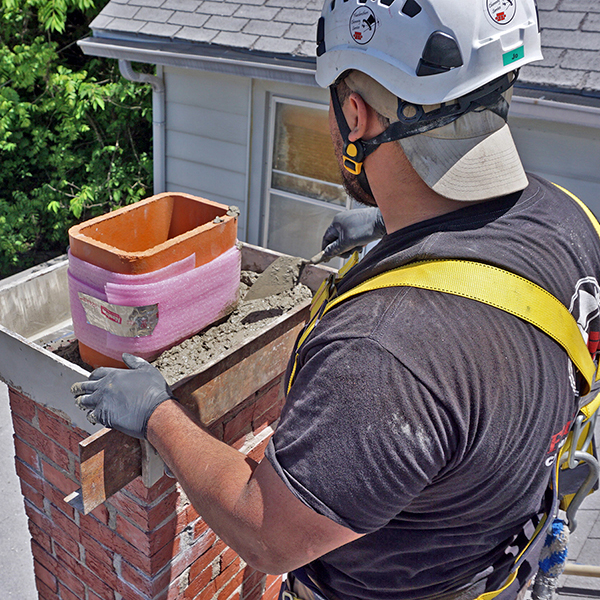Masonry Chimney Maintenance: What You Need to Know
 Traditional masonry chimneys aren’t built to last forever, and thanks to unavoidable rain and moisture, these structures can become damaged and unsafe faster than you would expect.
Traditional masonry chimneys aren’t built to last forever, and thanks to unavoidable rain and moisture, these structures can become damaged and unsafe faster than you would expect.
According to the Chimney Safety Institute of America (CSIA):
“All masonry chimney construction materials, except stone, will suffer accelerated deterioration as a result of prolonged contact with water.
Masonry materials deteriorate quickly when exposed to the freeze/thaw process, in which moisture that has penetrated the materials periodically freezes and expands causing undue stress.”
“Water in the chimney also causes rust in steel and cast iron, weakening or destroying the metal parts.”
These are just a few of the reasons that masonry chimney maintenance is so important. Fortunately, keeping your chimney in top working shape isn’t difficult when work is performed by CSIA-certified chimney specialists.
Here are some key tasks involved in properly maintaining your chimney.
Watch for signs of a leaky chimney
Often a leaky chimney will present obvious signs. When you see them, it’s time to have your chimney professionally inspected.
Water dripping into the firebox
Efflorescence (white staining) on the exterior chimney masonry
Strong, musty odors coming from the fireplace
Interior walls and ceiling that are damp to the touch or discolored
Areas of crumbling in the firebox or on the roof near the chimney – these are signs of deterioration that could be caused by or lead to a chimney leak
 Annual chimney sweep services
Annual chimney sweep services
Having your chimney cleaned once a year by a certified technician is the best way to prevent a dangerous chimney fire. Creosote, which is created when wood burns, clings to the inside of the chimney liner and builds up over time. This substance isn’t always easy to remove, but chimney experts have specialized scrapers, rotating brushes, solvents and vacuums to do a thorough job.
Obstruction removal
In addition to creosote, various debris can end up inside a chimney and create a drafting obstruction. Leaves and twigs from trees and the nests of small animals are common reasons smoke doesn’t draft well and fires are difficult to get started. Chimney blockages are of particular concern because they can cause smoke and deadly carbon monoxide to back up into the house. Having chimney obstructions removed will keep you and your family safe.
Annual chimney inspections
By having certified inspections once a year, you’ll be able to spot early chimney/fireplace damage and get it repaired before it becomes an expensive and dangerous problem. Basic chimney inspections cover:
Chimney cap
Chimney crown
Chimney liner
Exterior masonry
Roof flashing
Smoke chamber surfaces
Dampers
In some cases, video technology is used to zero in on difficult-to-access areas.
Timely repair services
Licensed chimney repair technicians can handle any level of chimney repair and give you the peace of mind that comes from knowing the job was done safely and correctly.
Technicians can find and repair leaky chimneys, replace missing areas of brick and mortar, repair or replace chimney liners, install chimney caps and flashing, seal and repair cracks in chimney crowns and perform other vital services that keep your chimney safe and fully operational.
Northeastern Chimney of West Hartford, CT, provides CSIA-certified chimney sweep, inspection and repair services all year long. Learn more about how we can maintain your chimney for safety and performance by calling (860) 233-5770.
This post first appeared on https://www.mychimney.com



 Gas
Gas Do you want to update your fireplace or add a new fireplace in your home? When you buy an EPA-approved fireplace, you are getting an efficient heating appliance that can help you cut your winter utility costs. Zero-clearance fireplaces can be installed in virtually any room of your home. Below, learn about a great way to upgrade your fireplace and also possibilities for new, modernized fireplace installations.
Do you want to update your fireplace or add a new fireplace in your home? When you buy an EPA-approved fireplace, you are getting an efficient heating appliance that can help you cut your winter utility costs. Zero-clearance fireplaces can be installed in virtually any room of your home. Below, learn about a great way to upgrade your fireplace and also possibilities for new, modernized fireplace installations. A New Fireplace Installation
A New Fireplace Installation As solidly as chimneys are constructed, if regular care and maintenance are neglected, they easily can become hazardous. If you have a home with an active fireplace, here are a few tips on how to care for your chimney.
As solidly as chimneys are constructed, if regular care and maintenance are neglected, they easily can become hazardous. If you have a home with an active fireplace, here are a few tips on how to care for your chimney. Annual chimney sweep
Annual chimney sweep A fully functional chimney is a safe chimney. A damaged chimney can be dangerous. Fortunately, you can spot many signs of
A fully functional chimney is a safe chimney. A damaged chimney can be dangerous. Fortunately, you can spot many signs of Issues inside the flue
Issues inside the flue Winter can be a beautiful time of year. But it can also be a turbulent time for your fireplace and chimney. Years of exposure to the constant rain, sleet, and snow can damage even the most well-built chimneys. Fortunately, there are several steps you can take to prepare your fireplace, heating stove and chimney to weather the dangerous winter storms that may lie ahead.
Winter can be a beautiful time of year. But it can also be a turbulent time for your fireplace and chimney. Years of exposure to the constant rain, sleet, and snow can damage even the most well-built chimneys. Fortunately, there are several steps you can take to prepare your fireplace, heating stove and chimney to weather the dangerous winter storms that may lie ahead. Masonry Repairs & Waterproofing
Masonry Repairs & Waterproofing
 If there is ever a time that you have no heat or hot water, you might be surprised to know that most boilers and furnaces, regardless of the fuel, vent through the chimney. The purpose of the chimney is to carry the flue gasses and exhaust up and out, so it doesn’t vent into the living spaces. As a safety feature, when the boiler or water heater can’t do that, it shuts down.
If there is ever a time that you have no heat or hot water, you might be surprised to know that most boilers and furnaces, regardless of the fuel, vent through the chimney. The purpose of the chimney is to carry the flue gasses and exhaust up and out, so it doesn’t vent into the living spaces. As a safety feature, when the boiler or water heater can’t do that, it shuts down.